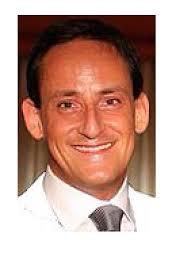Author Interviews, Brigham & Women's - Harvard, JAMA, Pancreatic, Race/Ethnic Diversity, Surgical Research / 18.11.2015
Regional, Racial Differences in Surgical Resections for Pancreatic Cancer
MedicalResearch.com Interview with:
Jason S. Gold MD FACS
Chief of Surgical Oncology, VA Boston Healthcare System
Assistant Professor of Surgery, Harvard Medical School
Brigham and Women’s Hospital
Medical Research: What is the background for this study?
Dr. Gold: Pancreas cancer is a lethal disease. While advances in the best available care for pancreas cancer are desperately needed, improvements can be made in addressing disparities in care. This study aimed to evaluate associations of social and demographic variables with the utilization of surgical resection as well as with survival after surgical resection for early-stage pancreas cancer.
Medical Research: What are the main findings?
Dr. Gold: The main findings are the following:
1: We found that less than half of patients with early-stage pancreas cancer undergo resection in the United States. Interestingly, the rate of resection has not changed with time during the eight-year study period.
2. We also found significant disparities associated with the utilization of surgical resection for early-stage pancreas cancer in the United States. African American patients, Hispanic patients, single patients, and uninsured patients were significantly less likely to have their tumors removed. There were regional variations in the utilization of surgical resection as well. Patients in the Southeast were significantly less likely to have a pancreas resection for cancer compared to patients in the Northeast.
3. Among the patients who underwent surgical resection for early-stage pancreas cancer, we did not see significant independent associations with survival for most of the social and demographic variables analyzed. Surprisingly, however, patients from the Southeast had worse long-term survival after pancreas cancer resection compared to those in other regions of the United States even after adjusting for other variables.
(more…)

 MedicalResearch.com Interview with:
Dr. Giuseppe Andò
University of Messina, Messina, Italy
Medical Research: What is the background for this study?
Dr. Andò: Patients’ preference for radial access for coronary angiography and percutaneous intervention is paralleled by an almost complete abolition of access-site bleeding. Given the deleterious impact of any clinically relevant bleeding event on short- and long-term outcomes, the use of radial access should translate into a reduction in net adverse events, especially in patients with high risk of bleeding such as those with an acute coronary syndrome. Nonetheless, studies conducted over the past decade by pioneers of
MedicalResearch.com Interview with:
Dr. Giuseppe Andò
University of Messina, Messina, Italy
Medical Research: What is the background for this study?
Dr. Andò: Patients’ preference for radial access for coronary angiography and percutaneous intervention is paralleled by an almost complete abolition of access-site bleeding. Given the deleterious impact of any clinically relevant bleeding event on short- and long-term outcomes, the use of radial access should translate into a reduction in net adverse events, especially in patients with high risk of bleeding such as those with an acute coronary syndrome. Nonetheless, studies conducted over the past decade by pioneers of 













